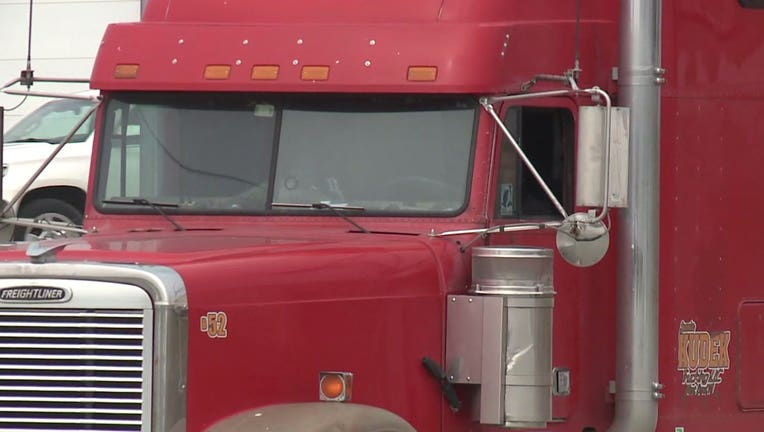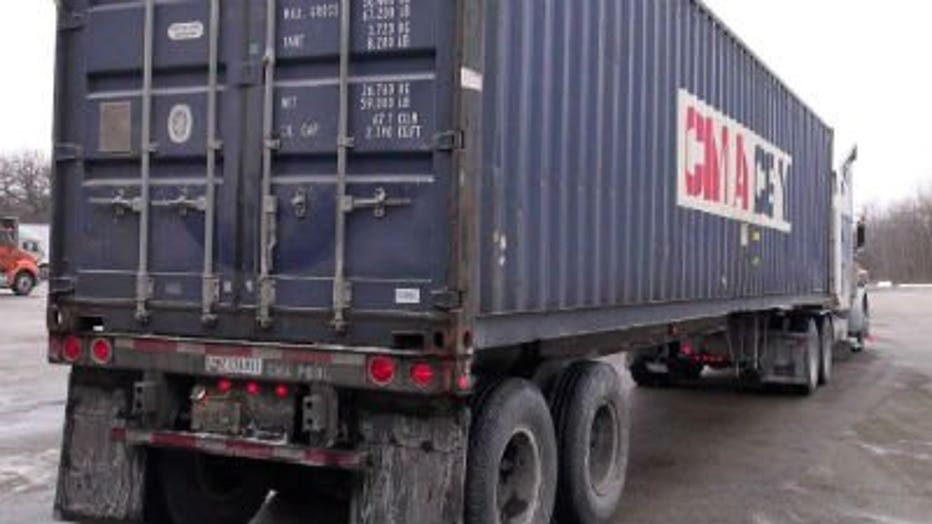Push to let teens drive trucks interstate divides the industry

WASHINGTON - Proposed legislation to test letting people as young as 18 years old drive big rigs interstate is exposing a divide in the trucking sector, where companies are having trouble finding workers for the grueling job of hauling goods over long distances.
A provision in the infrastructure bill the Senate approved in August would set up a pilot program allowing 18- to 20-year-olds to drive tractor-trailers across state lines. Most states allow people under 21 to get commercial driver’s licenses, but federal rules restrict those drivers to working within state borders.
Some in the industry say the measure could help expand the pool of available drivers. But others say it wouldn’t address core problems that cause people to leave trucking for other blue-collar work such as construction. Those issues include demanding work conditions and pay too low to compensate for the long hours behind the wheel and time away from home.
"If you’ve got holes in the bucket, no matter how much water you put in the top of the bucket, if it’s running out as fast at the bottom as it is at the top, you haven’t really resolved that issue," said Todd Spencer, president of the Owner-Operator Independent Drivers Association, which represents independent owners of single trucks and small fleets.
The association says there is no true shortage of drivers, as many trucking companies contend. In a recent letter to Commerce Secretary Gina Raimondo, the group said that hundreds of thousands of people get commercial driver’s licenses each year and that driver turnover, not supply, is the problem, as new entrants try out the business and leave for other work.
The American Trucking Associations, another trade body that represents trucking companies, hopes the pilot program will demonstrate that young people can safely drive tractor-trailers interstate, said Bill Sullivan, its executive vice president of advocacy.

Proponents of lowering the federal age limit say that plenty of young commercial-driver’s-license holders already drive long distances within large states like Texas and California and that the proposed apprenticeship program’s required 400 hours of training would add another layer of safety beyond what is needed to get a commercial license.
Highway-safety advocates warn that supervision on long routes is lax and that putting young drivers in big rigs will make roads more dangerous. They cite an analysis by the Insurance Institute for Highway Safety showing that teenagers are far likelier to crash than older drivers.
"They call it a pilot program, but it’s basically a foot in the door to change the rules for their imaginary driver shortage," said Russ Swift, a board member of the Truck Safety Coalition advocacy group whose son died in 1993 in an accident in which a truck driven by an 18-year-old got stuck on a road after an attempted U-turn.
Trucking employment fell sharply at the start of the coronavirus pandemic last year and was still below pre-pandemic levels this summer, according to the Bureau of Labor Statistics. Some industries have pointed to the dearth of truck drivers as a drag on their ability to restock and recover from the pandemic downturn and many transport operators say the halting rebound in trucking jobs highlights longstanding problems they have had in recruiting and retaining drivers.
Finding people to drive trucks has been complicated by issues including last year’s rollout of a federal database that tracks drug or alcohol use violations by holders of commercial driver’s licenses, as well as the relatively fast recovery of blue-collar sectors such as construction, said Avery Vise, a vice president at transportation research company FTR.
"We would always have several hundred job openings in the best of times," said Derek Leathers, chief executive of Werner Enterprises Inc., a large truckload carrier based in Omaha, Neb. But now the company has more than 500 job openings, he said, and the hardest to fill are those for long-haul drivers. Like many companies, Werner is trying to attract more drivers by offering higher pay, but ensuring they get home regularly is an important incentive as well, he said.
The infrastructure bill’s pilot program would allow up to 3,000 drivers to take part in the test, in a heavy-duty and tractor-trailer trucking sector that altogether employs about 1.8 million people, according to BLS. The House is due to take up the bill this month.
The ATA wants the Transportation Department to eventually eliminate its ban on interstate truck drivers under 21. The American Transportation Research Institute, a group affiliated with the ATA, projects that by 2023, the industry will fall 100,000 people short of the drivers needed to replace retiring workers and handle new freight demand. That is in part because close to a third of drivers now on the road are over age 55.
Mr. Sullivan of the ATA said the rigors of the job are more suitable for young people with more energy and without families. "I think that what I wanted to do and what I would put up with when I was 18 is a heck of a lot different than today," he said.
But broadening the pool of potential drivers could cause the industry to simply cycle through more workers, according to those who have studied the sector’s labor force, as truckload carriers seek to compete by cutting costs and keeping drivers on the road for long stretches.
"You can run your trucks more efficiently, in which case, especially as they go longer distances, drivers get treated like pinballs and they don’t get home very often; they work long hours," said Stephen Burks, a professor at the University of Minnesota, Morris focused on transportation and economics.
Truck drivers often shift into other blue-collar jobs such as construction and nontrucking transportation, moves driven by differences in earnings and hours, while high turnover in long-distance trucking can create the appearance of a shortage, Mr. Burks and BLS Associate Commissioner Kristen Monaco wrote in a 2019 paper.
Average annual pay for heavy-duty truck and tractor-trailer drivers in May 2020, the latest month for which data is available, was $48,710, up from $40,360 in 2012, according to BLS. In comparison, drivers of light trucks or vans had average annual pay of $41,050 in May 2020, BLS data show.
The problem isn’t just pay, drivers say, but the tough life on the road.
Michelle Kitchin, who drives for Byron Center, Mich., truckload carrier Van Eerden Trucking Co. and has worked behind the wheel for more than three decades, doubts that bringing in younger recruits would plug leaks in the trucking labor force. Truckers face a "retention issue," she said, because of the long hours, the time spent waiting for freight handling at truck docks and extended periods away from home.
"What 17-year-old is going to look at the trucking industry and say, ‘I want to do that when I’m 18?’" Ms. Kitchin asked.
For more, check out FOXBusiness.com.
Featured
Kroger: Grocery prices headed higher
Grocery prices are headed higher later this year, according to the U.S.’s largest supermarket by sales.


